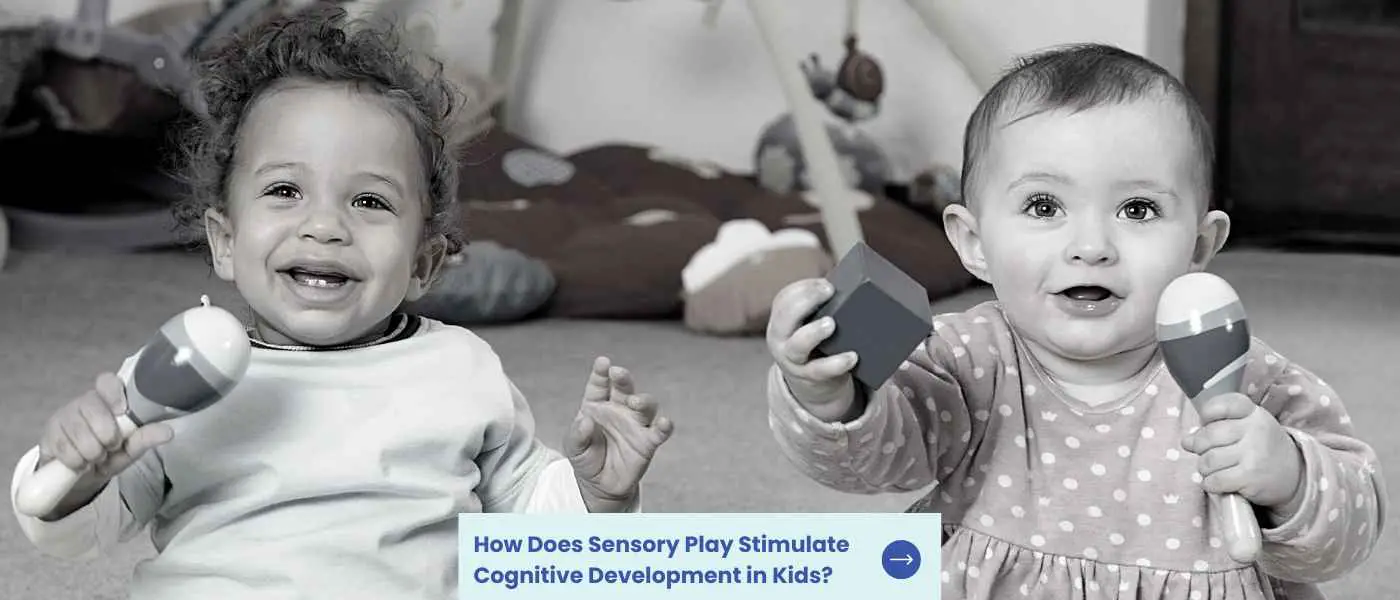Are you curious about the buzz surrounding sensory play and its impact on children’s cognitive development? If so, you’re in the right place. Many parents and educators are eager to understand the connection and harness its benefits.
Fortunately, sensory play, which engages a child’s senses, has been proven to have a multitude of advantages for cognitive growth and overall brain development.
As an expert in child development and early learning, I have prepared a comprehensive guide that delves into the science and benefits of sensory play.
Let’s navigate through this enlightening topic and help you grasp the profound influence of sensory play on a child’s cognitive journey.
Key Takeaways on Sensory Play for Cognitive Development
- Sensory play is an important part of a child’s development as it engages the five senses: sight, sound, smell, taste, touch, balance (vestibular) and body awareness (proprioception)
- Sensory play is an important part of establishing stronger brain connections, but it is important to take certain safety precautions in order to ensure the well-being of all participants.
- Creating a sensory environment can be fun and engaging for children of all ages.
| Aspect of Cognitive Development | How Sensory Play Stimulates It |
|---|---|
| Brain Development | Sensory experiences send signals to the brain that help strengthen neural pathways crucial for various types of learning. For instance, tactile experiences can enhance spatial and mathematical understanding. |
| Problem Solving & Decision Making | Children assess and make decisions about the materials they are interacting with in sensory play, developing their problem-solving skills. For example, “What happens if I pour water into sand?” |
| Memory Enhancement | Engaging multiple senses can make experiences more memorable. For instance, a child might remember the scent of a flower they touched and looked at, better than one they just looked at. |
| Language Development | Sensory play offers opportunities for children to describe their experiences, expanding their vocabulary. For example, describing the texture of slime as “sticky” or “gooey.” |
| Understanding Cause & Effect | Sensory activities, like water play, allow children to witness the immediate results of their actions, enhancing their grasp of cause and effect. |
| Spatial Awareness & Coordination | Manipulating sensory materials, such as molding clay or scooping sand, helps children understand spatial relationships and develop hand-eye coordination. |
| Enhances Observation Skills | Sensory play encourages children to notice details as they observe the properties and results of their sensory interactions. |
| Concentration | Engaging with sensory materials can be so enthralling that children often become deeply focused, boosting their attention span and concentration. |
| Scientific Thinking & Prediction | Sensory play naturally leads to curiosity and exploration, laying the foundation for scientific thinking. Children might predict outcomes, like guessing what color two paints will make when mixed. |
| Mathematical Understanding | Activities like filling and emptying containers in a sensory bin can introduce concepts of volume, measurement, and quantity. |
What Is Sensory Play?
Sensory play is an important part of a child’s development. It involves engaging the child’s senses through activities that stimulate sight, sound, smell, taste and touch. Sensory activities help build and reinforce nerve connections in the brain for proper sensory processing capabilities.
There are many benefits of sensory play. It encourages exploration and experimentation with materials in order to gain knowledge about the world around them. Through sensory play, children can develop their physical skills, gross motor skills. It also helps with cognitive growth and fine motor skill development.
Sensory development in young children takes place from birth onwards and continues through the early years of life. During this time, infants and toddlers are constantly exploring and experiencing the world around them through their senses, including sight, sound, touch, taste, and smell.
As they grow and develop, their sensory abilities become more refined, allowing them to better understand and interact with their environment.
Definition of Sensory Play
Sensory play is any activity that engages one or more of the five senses: sight, sound, smell, taste and touch. This type of play helps children explore their environment by using all their senses to learn about it.
Examples include:
- playing with sand or water during tactile play
- exploring different textures like fur or feathers
- listening to music
- smelling fragrant herbs or spices
- tasting food items like fruits or vegetables
- feeling objects such as blocks or balls
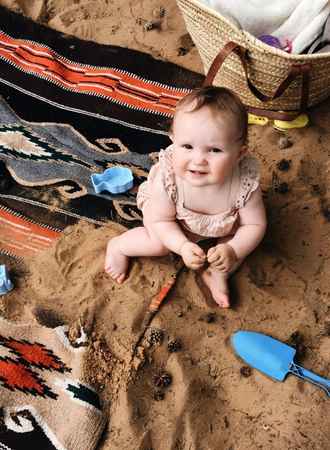
Types of Sensory Play
There are many types of sensory play activities available for children including tactile (touch), visual (sight), auditory (sound) and olfactory (smell).
Tactile activities involve manipulating objects with hands such as playing in sandboxes or finger painting while visual activities use colors and shapes to create art projects like collages or mosaics.
Auditory activities involve making sounds with instruments like drums or xylophones while olfactory activities use smells from essential oils to make scented creations like homemade soaps.
Outdoor toys that encourage movement and activity are good for developing the vestibular system of the inner ear which controls balance (vestibular sense).
As a child learns and develops proprioception, they gradually acquire proprioception, which allows them to gauge how much force is required to maneuver on playground equipment.
How Does Sensory Play Support Cognitive Development?
Sensory activities encourage kids to learn about the world around them and develop cognitive skills that will serve them for a lifetime. When it comes to stimulating cognitive development, sensory play can be incredibly beneficial.
Enhancing memory and attention span
One way in which sensory play stimulates cognitive development is by enhancing memory and attention span. Through activities such as matching games, sorting objects by color or shape, or even playing with puzzles, children are encouraged to recall information they have seen before and focus on the task at hand.
This type of activity strengthens their ability to remember details while also helping them pay better attention over time and help filter out excess sensory experiences.
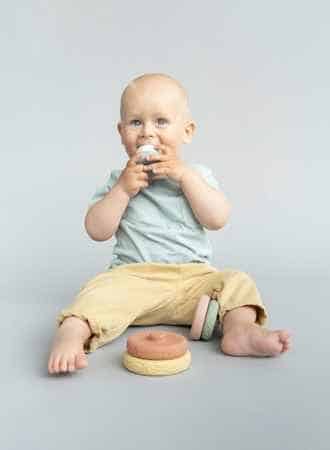
Problem solving
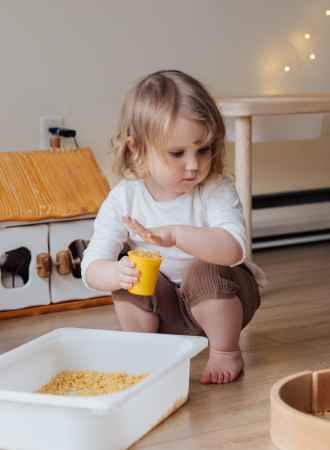
Another benefit of sensory play is that it encourages problem-solving skills in young learners. By engaging in activities like building blocks or stacking cups, children must use logic and reasoning to figure out how things fit together or how certain pieces interact with each other.
This kind of thinking not only improves their problem-solving abilities and spatial awareness but also teaches them valuable lessons about trial and error that will help them later on in life when faced with difficult situations or challenges.
As children learn through play experiences, they figure things out through analyzing results and solve problems using their new knowledge.
Encouraging language development
Sensory play can also stimulate language skills development in young children by providing opportunities for communication through exploration and discovery.
As they engage more senses with different textures, colors, shapes, sounds using different body parts, they may ask questions about what they’re experiencing which gives parents a chance to explain new words or concepts related to those experiences; this builds vocabulary as well as critical thinking skills.
What Are the Best Toys for Sensory Play?

Sensory play is essential in a child’s growth and development and helps them to explore and understand the world around them, exposing children to all kinds of sensory information using new materials.
Finding the right toys for sensory play can be overwhelming, but there are certain ones that are more effective than others. Here are the best kind of toys for sensory play that stimulate different senses and promote learning and development.
Tactile toys
Tactile toys such as sensory bins, sensory bottles, cotton balls and play dough are great for helping young children develop their sense of touch by exploring different textures and materials.
Textured balls made from fabrics like velvet or fur offer tactile exploration while also providing auditory feedback when they’re rolled around on the floor.
Foam blocks come in various sizes and shapes so kids can build towers or other structures while feeling the texture of each block against their skin.
Sandboxes provide an opportunity for sensory exploration through both sight and touch as kids dig into the sand with shovels and feel its grainy texture between their fingers.
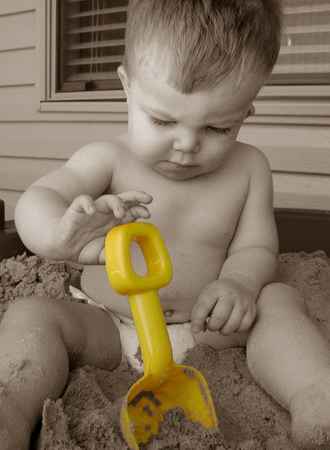
Visual toys
Visual toys give children something interesting to look at which helps stimulate cognitive development by teaching them about shapes, colors, numbers, letters, animals etc.
Puzzles with large pieces that fit together easily allow toddlers to learn how things fit together without becoming frustrated if they don’t get it right away .
Flashcards featuring colorful images also provide visual stimulation as well as an opportunity for language development when parents talk about what’s pictured on each card.
Auditory toys
Auditory toys use sound as a way to engage kids in playtime activities such as musical instruments like drums, xylophones, maracas, tambourines etc.
Talking dolls that say phrases related to whatever activity they’re doing encourage imaginative play while allowing little ones practice speaking skills. Music boxes also make lovely gifts since they create soothing sounds which calm babies down during nap time.
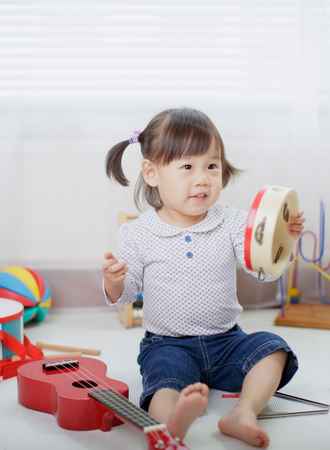
How to Create an Engaging Sensory Environment?
As children play with sensory toys in early childhood, they are building their brain’s pathways and they also build nerve connections among their young brain cells.
Sensory play includes social interaction, age appropriate activities, physical activity involving different objects and using descriptive words to describe their sensory experience.
Variety of materials and textures
Variety is key when it comes to creating a stimulating sensory environment. It’s important to provide different materials with various textures that can be explored through touch such as sandpaper or velvet fabric.
You can also include items like foam blocks or wooden blocks that have unique shapes and sizes which will help build fine motor skills in addition to providing tactile stimulation. Wooden toys in general are highly recommended for sensory play.
Appropriate lighting and sounds
The lighting should be bright enough so that the child can see all the objects around them but not too bright where it may cause discomfort or distraction from exploring the environment further.
Adding appropriate sounds such as soft music playing in the background helps create a calming atmosphere while still allowing them to focus on their activities without being overwhelmed by loud noises.
When choosing activities for your child’s sensory room, make sure they are age-appropriate so that they don’t become bored or frustrated if something is too difficult for them at this stage of development.
For example, toddlers may enjoy playing with musical instruments while older children might prefer puzzles or art projects which require more concentration than just banging on drums.


